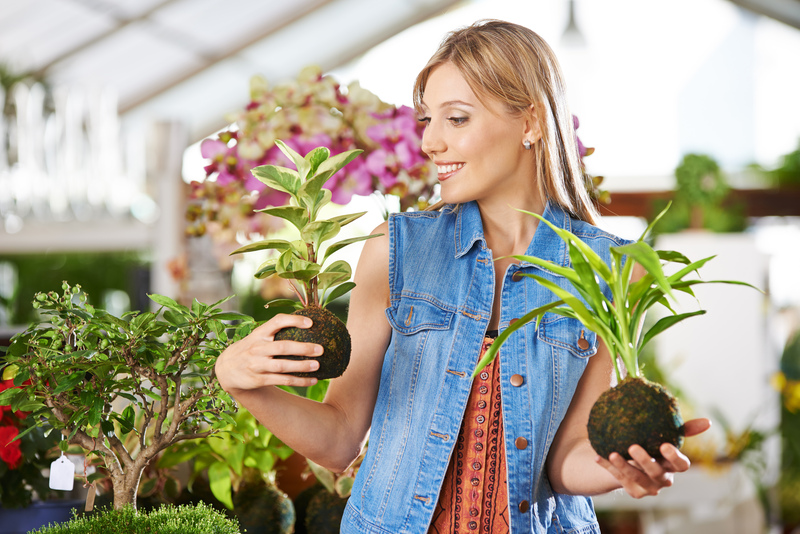Engage and Educate with a Child-Friendly Yard
Posted on 27/09/2025
Engage and Educate with a Child-Friendly Yard: Creating the Perfect Outdoor Space for Learning and Fun
Children thrive in environments that inspire curiosity, creativity, and discovery. Transforming your backyard into a child-friendly yard doesn't have to be complicated or costly. With thoughtful planning and the right features, you can design an outdoor space that encourages kids to learn through play, connects them with nature, and provides memories to last a lifetime. This comprehensive guide covers everything you need to know about how to engage and educate with a child-friendly yard while ensuring the area is both safe and stimulating.
Why Choose a Child-Friendly Yard?
The benefits of a child-friendly yard go far beyond entertainment. Outdoor play supports healthy physical development, social interaction, problem-solving skills, and emotional well-being. By creating an environment that invites exploration and hands-on learning, you set the stage for your child's intellectual and personal growth.
- Physical health: Climbing, running, jumping, and balancing all contribute to improved motor skills and coordination.
- Learning through experience: Sensory play, gardening, and observing wildlife spark curiosity and can reinforce science and math concepts in a fun, engaging way.
- Emotional benefits: Nature exposure reduces stress and encourages mindfulness and resilience.

Key Elements of a Child-Friendly Yard
When designing your educational and engaging backyard, consider the following features--each offering unique learning opportunities and hours of imaginative play.
1. Interactive Learning Zones
Divide your yard into distinct zones for multiple activities, ensuring space for both free play and structured learning. For example:
- Garden beds for planting vegetables and flowers--teach responsibility, biology, and patience.
- Nature corners with birdhouses, bug hotels, and logs--observe wildlife, sparking lessons in ecosystems and animal behavior.
- Outdoor classroom--a simple table and chairs under a shady tree create an ideal spot for crafts, reading, or science experiments.
2. Safe Play Equipment
Play structures such as swings, slides, and climbing frames enhance both physical fitness and imaginative play. Always check that materials are sturdy, surfaces are soft (mulch, sand, or rubber mats), and equipment is age-appropriate and meets safety standards.
- Obstacle courses: Challenge children with tunnels, balance beams, or stepping stones.
- Sandpits: Promote sensory play and early engineering concepts through digging and building.
- Nature trails: Pebbled or mulch paths foster walking, exploring, and observing.
3. Sensory Gardens
A sensory-rich garden engages all five senses and enriches children's understanding of their environment:
- Sight: Vibrant flowers, multicolored foliage, and decorative stones.
- Touch: Varied textures--lamb's ear, smooth stones, crunchy mulch.
- Sound: Rustling grasses, wind chimes, or water features.
- Smell: Lavender, rosemary, thyme, or scented blooms.
- Taste: Herb and vegetable gardens--encourage healthy eating and plant care.
4. Creative and Art Spaces
Outdoor creativity helps kids express themselves and hone critical thinking skills:
- Paved patio or chalkboard walls: For chalk art, doodling, and teaching alphabets or numbers.
- DIY art stations: Provide paints, safe scissors, recycled materials for outdoor masterpieces.
- Mud kitchens: Equip with old pots, pans, and utensils for pretend cooking--combine science, art, and sensory play.
5. Quiet Retreats
Not every child wants to be active all the time. Quiet, cozy corners allow for reading, reflection, or solitude. Consider:
- Secluded nooks: Teepees, tents, or shady treehouses provide privacy and a sense of retreat.
- Reading benches: Place a weatherproof bench under a tree, ideally with shelves or boxes for outdoor storybooks.
Design Tips for a Safe and Engaging Child-Friendly Yard
Incorporating Natural Elements
Children are naturally drawn to nature. Using organic materials like wood, stone, and living plants transforms the yard into a more inviting and eco-friendly space. Plant native species to attract butterflies, bees, and birds, teaching children about biodiversity and conservation.
Prioritizing Safety
Safety is paramount in any child-specific landscape plan. Always:
- Remove thorny, toxic, or allergenic plants.
- Ensure clear sight lines from the house to all play areas.
- Install fences or hedges to keep kids in and hazards out.
- Use non-slip materials on patios, decks, and steps.
- Cover sharp edges with guards or padding.
- Regularly inspect equipment for wear and stability.
Optimizing for All Ages
A truly inclusive child-friendly backyard adapts as children grow:
- Choose convertible structures--a sandpit can become a garden bed; a small playhouse can be upgraded to a teen hangout.
- Provide layered challenges: climbing rocks for younger kids, higher monkey bars or more complex obstacles for older siblings.
Engaging and Educating: Practical Ideas and Activities
Seasonal Gardening Projects
Involve children in every step--from planting seeds and watering to harvesting and composting. Hands-on gardening teaches concepts such as lifecycles, weather, seasons, and sustainability.
- Start a vegetable patch: Quick-grow crops like radishes and lettuce are satisfying for young children.
- Create a pollinator garden: Learn about bees and butterflies while supporting the environment.
Wildlife Observation and Citizen Science
A wildlife-friendly yard doubles as an open-air laboratory:
- Build a bird bath or feeder--keep a log of visitors.
- Install bug hotels--study insects and their tiny habitats.
- Observe seasonal changes--leaf color, migrating birds, blooming flowers.
Outdoor STEM Experiments
Use the child-centered yard to put science and math into action:
- Measure rainfall or track garden growth with homemade gauges and charts.
- Build simple structures (forts, bridges) using natural materials.
- Learn about physics with ramps, pulleys, or water flow channels.
Storytelling and Imaginative Play
Encourage role-play and creative thinking:
- Stage treasure hunts or nature scavenger hunts with a learning theme.
- Use fairy gardens or dinosaur lands for storytelling and historical exploration.
- Set up themed days--pirate ships, explorer camps, or artist studios outside.
Eco-Friendly and Sustainable Child-Friendly Yards
Building a child-focused educational yard is a great opportunity to teach sustainability. Use environmentally responsible materials, minimize water usage, and compost food scraps and garden waste. Get children involved in recycling, water conservation, and wildlife habitat creation. This hands-on approach instills lifelong respect for nature and a sense of global citizenship.
Water Conservation
- Rain barrels: Collect water for garden irrigation.
- Drip irrigation: Minimize evaporation and maximize plant health.
Composting and Recycling
- Set up a compost bin--kids can help turn scraps into valuable fertilizer.
- Use recycled or upcycled materials for building garden beds, art projects, and play structures.

Frequently Asked Questions about Child-Friendly Yards
How do I start designing a child-friendly yard?
Begin by observing how your children currently use the space. Engage them in the planning, asking what kinds of activities they enjoy or want to try. Map out safe areas for active play, quieter spots for reading or crafts, and designate a section for gardening or wildlife observation. Start small--even modest changes can have a big impact.
What if my yard is small or paved?
Even a tiny paved patio can be transformed for kids! Use container gardens, portable sensory bins, and vertical planters. Hang chalkboards or art boards on the fence. Incorporate foldable tables for activities and invest in multi-use features such as benches with hidden storage.
How often should I change or update the features?
Let your child's interests guide you. As children grow, adjust the equipment and activities to keep them engaged and challenged. Add new plants each season, rotate outdoor games, and occasionally repaint or redecorate playhouses and art stations.
How can I make my yard inclusive for all children?
Choose accessible design features. Ramps instead of steps, wide paths, smooth surfaces, and sensory elements at different heights ensure children of all abilities can participate fully. Avoid using mulch or gravel in areas where wheelchair access is needed. Offer a range of activities that appeal to varied ages and interests.
Conclusion: The Lasting Value of a Child-Friendly Educational Yard
An inviting, stimulating, and safe child-friendly yard is more than just a place for play; it's a living classroom where children can learn, explore, create, and grow. By integrating nature, education, creativity, and sustainability, your backyard becomes a cherished family space and a powerful tool for your child's lifelong success. With just a little planning and imagination, you can engage and educate with a child-friendly yard that delights children and adults alike--season after season.
Transform your yard today and watch your children blossom!

